What is a Crassula?
The genus Crassula contains around 200 species of succulent plants, with the most famous being the jade plant (Crassula ovata). These plants are members of the stonecrop family (Crassulaceae) and native to many parts of the world. However, most cultivated varieties come from Eastern Cape in South Africa.
Crassula Care
Propagation is done through stem or leaf cuttings, and they can tolerate some small degree of frost. Extremely cold or hot temperatures will cause them to lose foliage and eventually die. They prefer bright light but should be shielded from direct sunlight during extreme heat as it could lead to sunburns on their leaves. Most crassulas need only moderate watering. Too much water can result in root rot, while too little will cause them to become dehydrated and die.
How to Identify a Crassula
When trying to identify a crassula, look for thick, fleshy leaves that grow in pairs and are symmetrical. These leaves can be triangular, egg-shaped, tube-shaped, or round. The leaves can be bright or dark green and usually have a reddish hue in the bright sun. Another way to tell crassulas apart from other succulents is by looking at their stems. The stem of a crassula is woody and almost tree-like, while cacti have more spiny stems.
Additionally, the flowers are not show-stopping. They are small and generally white or pink. If you keep an eye out for these characteristics, you should be able to easily identify this type of succulent!
Do Crassulas Need Direct Light?
When it comes to lighting for your Crassula succulents, indirect sunlight is best. Place them in an area that receives bright light all day, such as near a south-facing window or patio door. You can also provide up to six hours of direct sunlight per day instead. However, avoid overexposing the plants during the hottest parts of summer, or they may become sunburnt. If you provide direct sunlight for more than 6 hours daily, ensure the plant is shaded from mid-morning until late afternoon when UV rays are at their strongest. And remember to always monitor your plants carefully so you can adjust their lighting levels accordingly and keep them healthy!
How Long Do Crassulas Live?
Crassula plants have a wide range of lifespans, depending on the type. Some may last 20 years, while others can live for over 100 years! If you take care of them properly, you could enjoy your crassula plant for many years. With regular checkups and maintenance, you can extend its lifespan even further!
Types of Crassula Succulents
There are many types of crassula succulents, and they have become very prevalent house plants in recent years. They come in so many vibrant shades of orange, pink, purple, and green it is no wonder they are so popular. Here are a few of our favorite Crassula succulents.
1. Crassula ovata – Jade Plant
We will start with the world-famous jade plant. This plant is also called the lucky plant, money plant, and money tree. It is native to Africa and is one of the most common house plants in the world. It needs little water and 6 hours of direct sun or 12 hours of bright indirect light. Jade is often used as a bonsai tree, as it is durable and easy to prune. It is very easy to propagate. Every leaf that falls off the plant can be grown into a new jade. Happy plants will reward you with small pink or white flowers!
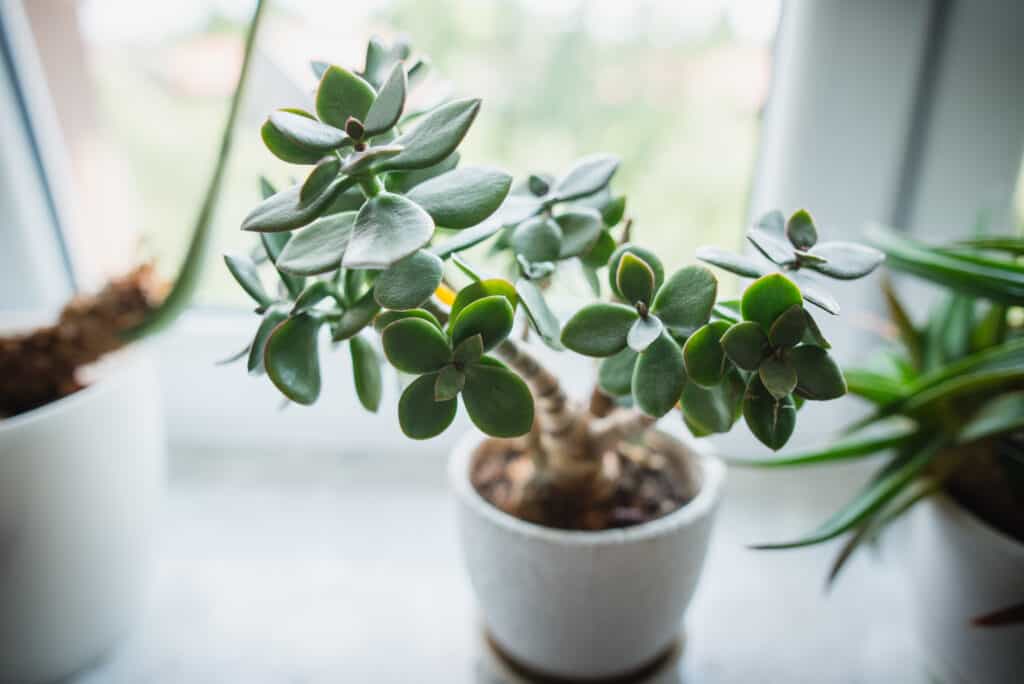
©Jus_Ol/Shutterstock.com
2. Crassula capitella – Campfire Plant
Also known as red flames and red pagoda, this succulent is also native to Africa. It is famous for its strong red-tinted leaves that grow more brilliant in bright sun. The leaves are pointed and splay out in a rosette shape. Lucky gardeners will be blessed with star-shaped white flowers.
This species of Crassula succulent grows pointy green leaves stacked atop one another. When young, the leaves are green but mature into a vibrant red color with age and bright light. When the branches are long enough, they will topple over and spread along the ground, rooting new plants as they grow.
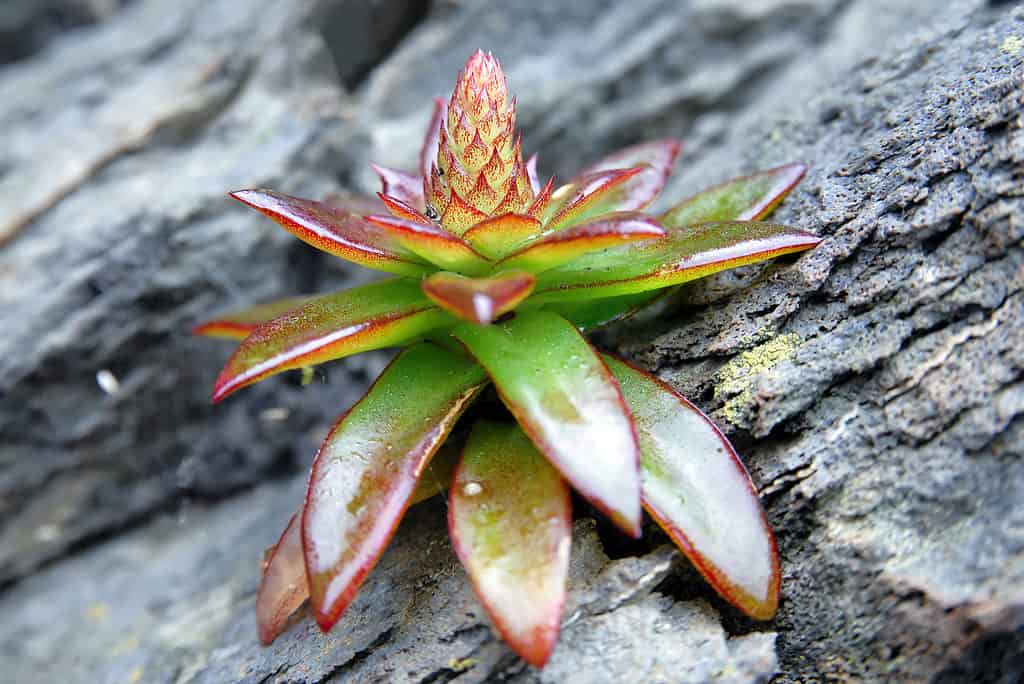
©Kirill Skorobogatko/Shutterstock.com
3. Crassula arborescens – Silver Dollar Plant
This lovely Crassula can grow up to four feet tall and makes an excellent garden shrub. It can be grown inside or outside the house and makes a stunning addition to any succulent garden. It has rounded green-gray leaves that are shaped like silver dollars. In the hot summer sun, it will produce pink and white flowers, and the edges of the leaves will turn red.

©Trish Jose/Shutterstock.com
4. Crassula umbella – Wine Cup
The Crassula umbella (Wine Cup) cultivar is a small succulent with un-branched, upright stems. The leaves of this plant are circular, bright green, and arranged in pairs on the stems. Each leaf has an interesting edge that is raised and fused around the stem creating an attractive cup shape.
In the winter, small yellow-green flowers can be seen blooming atop slender stems. When flowering, this species of Crassula can reach 6 inches tall, making it a delicate and unique addition to your succulent garden.

©1,339 × 1,432 pixels, file size: 648 KB, MIME type: image/jpeg – License
5. Crassula perforata – String of Buttons
This shrub-like succulent grows in a stacked fashion, one leaf on top of another, forming an erect stalk. Eventually, the stalk becomes so tall that it tips over and sprawls outward. Each stalk can grow up to 2 feet long! The leaves are triangular, green, and tinged with red in bright enough light. Cream-colored flowers form on happy plants.
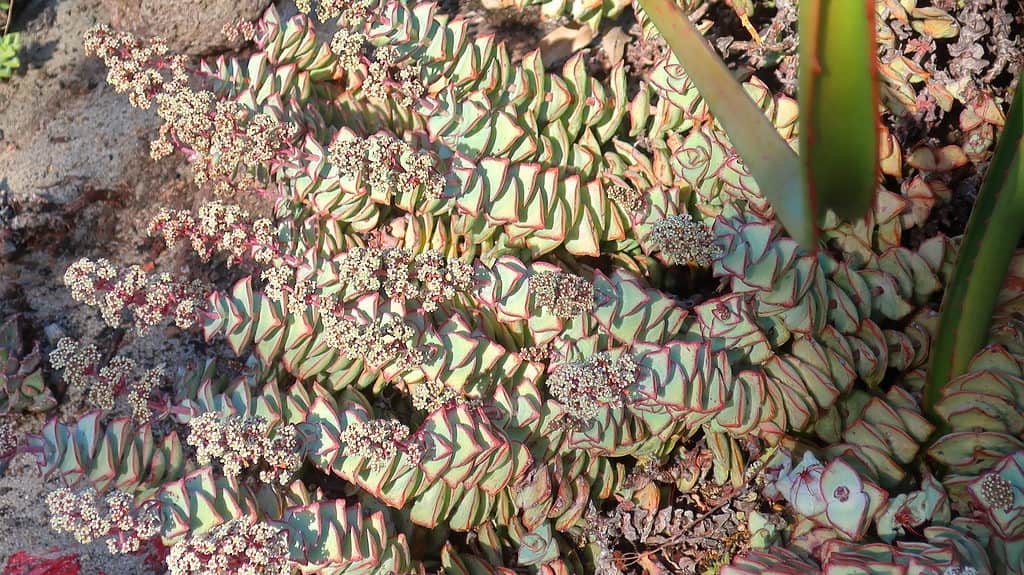
©cultivar413 / Flickr – License
6. Crassula barcklyi – Rattlesnake Tail
This dwarf crassula succulent grows in a unique shape. Each stem grows from the main plant in a vertical column that is thicker at the base and thinner as it grows longer. The leaves overlap and are smooth and thick, giving each branch a tail-like appearance. The leaves are blue-gray and look somewhat like an elongated pinecone when fully mature. If you are lucky, you will be graced with a flower at the end of each branch!
7. Crassula tormentosa – Woolly
This clump-forming Crassula succulent can reach heights of two feet tall. The leaves are covered in fine hair that gives them a fuzzy, woolly texture. The leaves grow in a circular rosette pattern, and new offsets grow outward from the parent plant, making a thicket of lovely gray-green silvery plants.
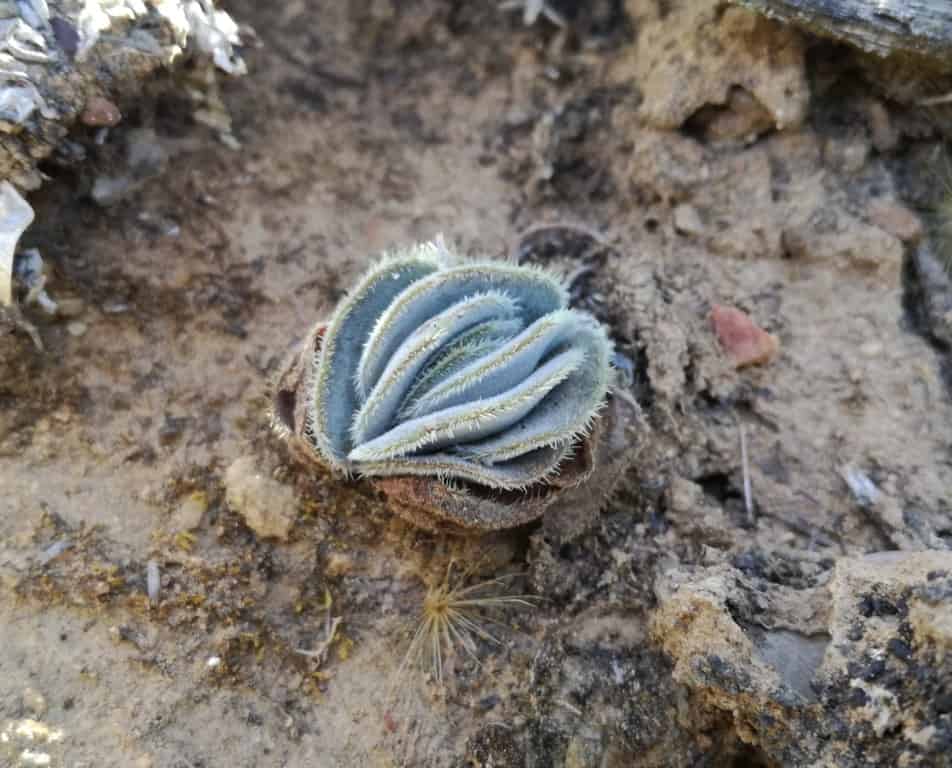
©952 × 768 pixels, file size: 292 KB, MIME type: image/jpeg – License
8. Crassula multicava – Fairy
This unique-looking Crassula grows glossy leaves that are thin and round. The leaves are thick and fleshy, like all crassulas, but the upper surface is covered in polka-dot pores that the plant uses to absorb water. This plant spreads along the ground to form a dense mat of ground cover and produces star-shaped white flowers.

©Sergodef/Shutterstock.com
9. Crassula argentea – Hummel’s Sunset
This eye-catching Crassula succulent is similar to the common jade but has more variety in color. The leaves are cold and green, trimmed with red and orange in the brightest light. The rich golds are a lovely backdrop for the white star-shaped flowers that cover the plant each year. This Crassula can grow up to 3 feet tall with thick, woody stems and a lovely branching canopy.
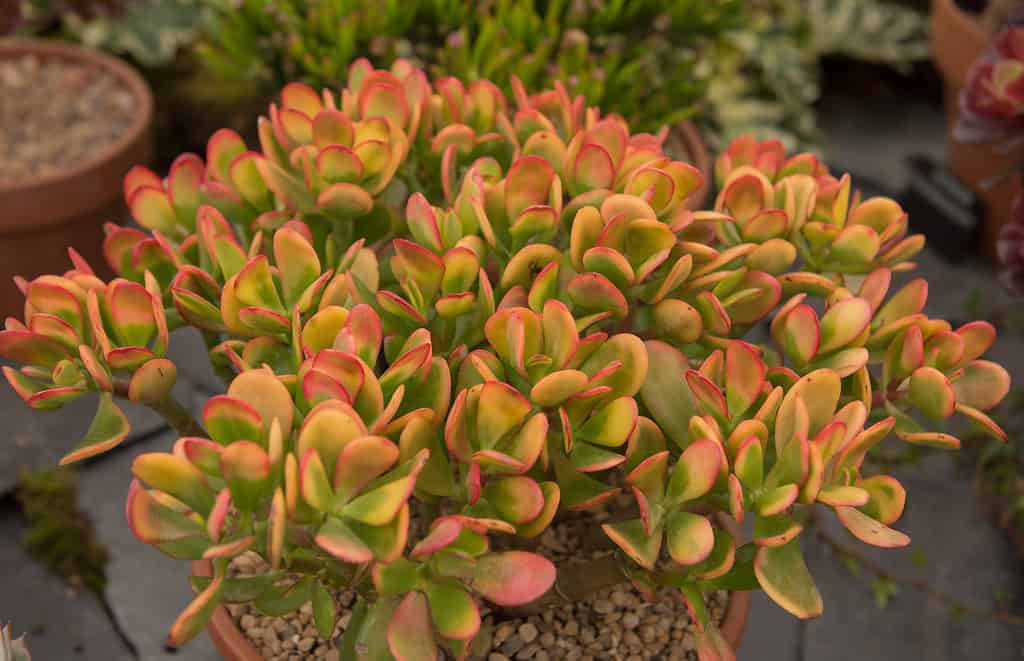
©Peter Turner Photography/Shutterstock.com
10. Crassula Ovata – Gollum
We can’t forget our tubular friend “Gollum.” This Crassula has the nickname ogre ears because of its long tubular leaves, each with a dented depression in the tip. When mature, they look like small trees, with trumpet-shaped leaves that are bright green with reddish-purple hues on each end. This species needs bright direct light for at least 6 hours per day and excellent air-circulation and drainage.
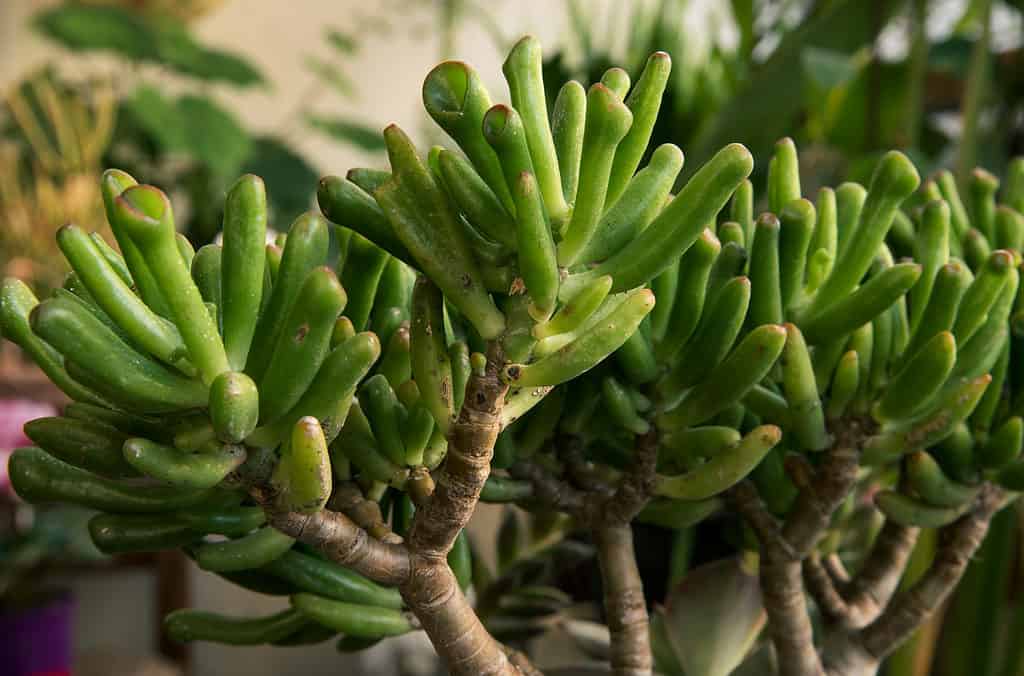
©Gonzalo de Miceu/Shutterstock.com
Summary of 10 Types of Crassula Succulents
- Crassula ovata – Jade Plant
- Crassula capitella – Campfire Plant
- Crassula arborescens – Silver Dollar Plant
- Crassula umbrella – Wine Cup
- Crassula perforata – String of Buttons
- Crassula barcklyi – Rattlesnake Tail
- Crassula tormentosa – Woolly Crassula
- Crassula multicava – Fairy Crassula
- Crassula argentea – Hummel’s Sunset
- Crassula ovata cultivar – Gollum
Next Up
- Watch Chain Succulent
- Types Of Hanging Succulents
- Succulent Plant Care: How to Care for Most Succulents!
The post 10 Types Of Crassula Succulents appeared first on AZ Animals.
from Animal News, Facts, Rankings, and More! - AZ Animals https://ift.tt/86vkSpy